Articles
- Page Path
- HOME > Osong Public Health Res Perspect > Volume 3(3); 2012 > Article
-
Articles
Opening of the National Biobank of Korea as the Infrastructure of Future Biomedical Science in Korea - Sang Yun Choa, Eun Jung Honga, Jung Min Nama, Bogkee Hana, Chaeshin Chub, Ok Parka
-
Osong Public Health and Research Perspectives 1970;3(3):177-184.
DOI: https://doi.org/10.1016/j.phrp.2012.07.004
Published online: January 1, 1970
aDivision of Biobank for Health Sciences, Korea National Institute of Health, Osong, Korea.
bDivision of Epidemic Intelligence Service, Korea Centers for Disease Control and Prevention, Osong, Korea.
- Corresponding author. E-mail: okpark8932@gmail.com
• Received: July 2, 2012 • Revised: July 18, 2012 • Accepted: July 19, 2012
Copyright ©2012, Korea Centers for Disease Control and Prevention
This is an Open Access article distributed under the terms of the Creative Commons Attribution Non-Commercial License () which permits unrestricted non-commercial use, distribution, and reproduction in any medium, provided the original work is properly cited.
- Abstract
- 1. Introduction
- 2. Overview of the Korea Biobank Project
- 3. Status of Population-based Human Biospecimens
- 4. Status of Disease-related Human Biospecimens
- 5. Status and Results of the Distribution in the First Term KBP
- 6. Quality Check of Biospecimens in KBN
- 7. Opening of Newly Constructed NBK Building and Facilities
- 8. Conclusion
Figure & Data
References
Citations
Citations to this article as recorded by 

- Associations of Serum Folate and Homocysteine Concentrations with All-Cause, Cardiovascular Disease, and Cancer Mortality in Men and Women in Korea: the Cardiovascular Disease Association Study
Sihan Song, Bo Mi Song, Hyun-Young Park
The Journal of Nutrition.2023; 153(3): 760. CrossRef - Matching Drug Metabolites from Non-Targeted Metabolomics to Self-Reported Medication in the Qatar Biobank Study
Karsten Suhre, Nisha Stephan, Shaza Zaghlool, Chris R. Triggle, Richard J. Robinson, Anne M. Evans, Anna Halama
Metabolites.2022; 12(3): 249. CrossRef - Age Group-specific Reference Intervals for the Elecsys Anti-Müllerian Hormone Assay in Healthy Korean Women: a Nationwide Population-based Study
Misuk Ji, Kwang-Rae Kim, Hyun-Ki Kim, Woochang Lee, Yeo-Min Yun, Sail Chun, Won-Ki Min
Annals of Laboratory Medicine.2022; 42(6): 621. CrossRef - Building a Biobank Network for Health Research in Indonesia
Ery Kus Dwianingsih, Junaedy Yunus, Lutfan Lazuardi, Amirah Ellyza Wahdi, Aulia Fitri Rhamadianti, Florentina Linda, Sunandar Hariyanto, Jajah Fachiroh
Open Access Macedonian Journal of Medical Sciences.2022; 10(A): 1067. CrossRef - The Association of Serum High-Sensitivity C-Reactive Protein Level With the Risk of Site-Specific Cancer Mortality: The Health Examinees (HEXA) Study Cohort
Sang-Ah Lee, Sung-Ok Kwon, Minkyo Song, Ji-Yeob Choi, Aesun Shin, Xiao-Ou Shu, Wei Zheng, Jong-Koo Lee, Daehee Kang
American Journal of Epidemiology.2022; 191(12): 2002. CrossRef - Asian-specific 3’UTR variant in CDKN2B associated with risk of pituitary adenoma
Byeong Ju Youn, Hyun Sub Cheong, Suhg Namgoong, Lyoung Hyo Kim, In Ki Baek, Jeong-Hyun Kim, Seon-Jin Yoon, Eui Hyun Kim, Se Hoon Kim, Jong Hee Chang, Sun Ho Kim, Hyoung Doo Shin
Molecular Biology Reports.2022; 49(11): 10339. CrossRef - Two independent variants of epidermal growth factor receptor associated with risk of glioma in a Korean population
In Ki Baek, Hyun Sub Cheong, Seok Namgoong, Jeong-Hyun Kim, Seok-Gu Kang, Seon-Jin Yoon, Se Hoon Kim, Jong Hee Chang, Lyoung Hyo Kim, Hyoung Doo Shin
Scientific Reports.2022;[Epub] CrossRef - The concept of the national information platform of biobanks of the Russian Federation
A. N. Meshkov, O. Yu. Yartseva, A. L. Borisova, M. S. Pokrovskaya, O. M. Drapkina
Cardiovascular Therapy and Prevention.2022; 21(11): 3417. CrossRef - Prawne aspekty badań genomicznych i biobankowania w regionie Azji Wschodniej
Karol Gregorczuk
Gdańskie Studia Azji Wschodniej.2022; (22): 24. CrossRef - PheWAS-ME: a web-app for interactive exploration of multimorbidity patterns in PheWAS
Nick Strayer, Jana K Shirey-Rice, Yu Shyr, Joshua C Denny, Jill M Pulley, Yaomin Xu, Lu Zhiyong
Bioinformatics.2021; 37(12): 1778. CrossRef - Introduction to the human disease resource search and distribution platform through the Korea Biobank Network portal
Young Hwan Kim, Hong Rim Cha, Ji Eun Lee, Se Eun Cha, Yeong Jin Choi
Journal of the Korean Medical Association.2021; 64(1): 57. CrossRef - GenomeAsia100K: Singapore Builds National Science with Asian DNA
Manoj Vimal, Wairokpam Premi Devi, Ian McGonigle
East Asian Science, Technology and Society: An Int.2021; 15(2): 238. CrossRef - Common Data Model and Database System Development for the Korea Biobank Network
Soo-Jeong Ko, Wona Choi, Ki-Hoon Kim, Seo-Joon Lee, Haesook Min, Seol-Whan Oh, In Young Choi
Applied Sciences.2021; 11(24): 11825. CrossRef - The emerging landscape of health research based on biobanks linked to electronic health records: Existing resources, statistical challenges, and potential opportunities
Lauren J. Beesley, Maxwell Salvatore, Lars G. Fritsche, Anita Pandit, Arvind Rao, Chad Brummett, Cristen J. Willer, Lynda D. Lisabeth, Bhramar Mukherjee
Statistics in Medicine.2020; 39(6): 773. CrossRef - Electronic health records and polygenic risk scores for predicting disease risk
Ruowang Li, Yong Chen, Marylyn D. Ritchie, Jason H. Moore
Nature Reviews Genetics.2020; 21(8): 493. CrossRef - Sport and exercise genomics: the FIMS 2019 consensus statement update
Kumpei Tanisawa, Guan Wang, Jane Seto, Ioanna Verdouka, Richard Twycross-Lewis, Antonia Karanikolou, Masashi Tanaka, Mats Borjesson, Luigi Di Luigi, Michiko Dohi, Bernd Wolfarth, Jeroen Swart, James Lee John Bilzon, Victoriya Badtieva, Theodora Papadopoul
British Journal of Sports Medicine.2020; 54(16): 969. CrossRef - Cohort Profile: The Cardiovascular and Metabolic Diseases Etiology Research Center Cohort in Korea
Jee-Seon Shim, Bo Mi Song, Jung Hyun Lee, Seung Won Lee, Ji Hye Park, Dong Phil Choi, Myung Ha Lee, Kyoung Hwa Ha, Dae Jung Kim, Sungha Park, Won-Woo Lee, Yoosik Youm, Eui-Cheol Shin, Hyeon Chang Kim
Yonsei Medical Journal.2019; 60(8): 804. CrossRef - Higher Pro-Inflammatory Dietary Score is Associated with Higher Hyperuricemia Risk: Results from the Case-Controlled Korean Genome and Epidemiology Study_Cardiovascular Disease Association Study
Hye Sun Kim, Minji Kwon, Hyun Yi Lee, Nitin Shivappa, James R. Hébert, Cheongmin Sohn, Woori Na, Mi Kyung Kim
Nutrients.2019; 11(8): 1803. CrossRef - Association of C-Reactive Protein with Risk of Developing Type 2 Diabetes Mellitus, and Role of Obesity and Hypertension: A Large Population-Based Korean Cohort Study
Suganya Kanmani, Minji Kwon, Moon-Kyung Shin, Mi Kyung Kim
Scientific Reports.2019;[Epub] CrossRef - Large-Scale Genomic Biobanks and Cardiovascular Disease
Aeron M. Small, Christopher J. O’Donnell, Scott M. Damrauer
Current Cardiology Reports.2018;[Epub] CrossRef - The Rare Disease Bank of Japan: establishment, current status and future challenges
Mayako Tada, Makoto Hirata, Mitsuho Sasaki, Ryuichi Sakate, Arihiro Kohara, Ichiro Takahashi, Yosuke Kameoka, Toru Masui, Akifumi Matsuyama
Human Cell.2018; 31(3): 183. CrossRef - Association analysis of RTEL1 variants with risk of adult gliomas in a Korean population
Suhg Namgoong, Hyun Sub Cheong, Jeong-Hyun Kim, Lyoung Hyo Kim, Jung Yeon Seo, Seok-Gu Kang, Seon-Jin Yoon, Se Hoon Kim, Jong Hee Chang, Hyoung Doo Shin, Srinivas Mummidi
PLOS ONE.2018; 13(11): e0207660. CrossRef - Cohort Profile: The Korean Genome and Epidemiology Study (KoGES) Consortium
Yeonjung Kim, Bok-Ghee Han
International Journal of Epidemiology.2017; 46(2): e20. CrossRef - OBIB-a novel ontology for biobanking
Mathias Brochhausen, Jie Zheng, David Birtwell, Heather Williams, Anna Maria Masci, Helena Judge Ellis, Christian J. Stoeckert
Journal of Biomedical Semantics.2016;[Epub] CrossRef - Publicly-funded biobanks and networks in East Asia
Sunhee Lee, Paul Eunil Jung, Yeonhee Lee
SpringerPlus.2016;[Epub] CrossRef - Biobank Regulation in South Korea
Won Bok Lee
Journal of Law, Medicine & Ethics.2016; 44(2): 342. CrossRef - Development of an Integrated Biospecimen Database among the Regional Biobanks in Korea
Hyun Sang Park, Hune Cho, Hwa Sun Kim
Healthcare Informatics Research.2016; 22(2): 129. CrossRef - The Qatar Biobank: background and methods
Hanan Al Kuwari, Asma Al Thani, Ajayeb Al Marri, Abdulla Al Kaabi, Hadi Abderrahim, Nahla Afifi, Fatima Qafoud, Queenie Chan, Ioanna Tzoulaki, Paul Downey, Heather Ward, Neil Murphy, Elio Riboli, Paul Elliott
BMC Public Health.2015;[Epub] CrossRef - ELSI practices in genomic research in East Asia: implications for research collaboration and public participation
Go Yoshizawa, Calvin Wai-Loon Ho, Wei Zhu, Chingli Hu, Yoni Syukriani, Ilhak Lee, Hannah Kim, Daniel Fu Chang Tsai, Jusaku Minari, Kazuto Kato
Genome Medicine.2014;[Epub] CrossRef - A Strategic Plan for the Second Phase (2013–2015) of the Korea Biobank Project
Ok Park, Sang Yun Cho, So Youn Shin, Jae-Sun Park, Jun Woo Kim, Bok-Ghee Han
Osong Public Health and Research Perspectives.2013; 4(2): 107. CrossRef - Current Status, Challenges, Policies, and Bioethics of Biobanks
Byunghak Kang, Jaesun Park, Sangyun Cho, Meehee Lee, Namhee Kim, Haesook Min, Sooyoun Lee, Ok Park, Bokghee Han
Genomics & Informatics.2013; 11(4): 211. CrossRef - Basis for Korean Genome Study
Hae-Wol Cho, Chaeshin Chu
Osong Public Health and Research Perspectives.2012; 3(3): 119. CrossRef


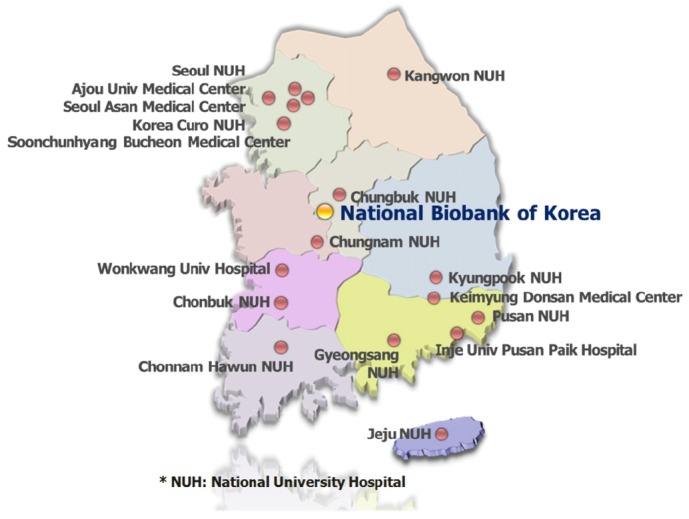
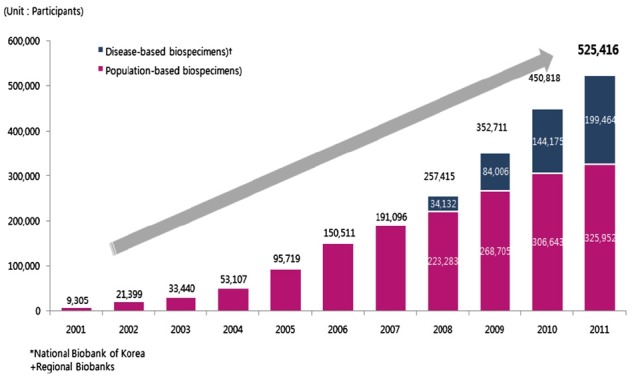
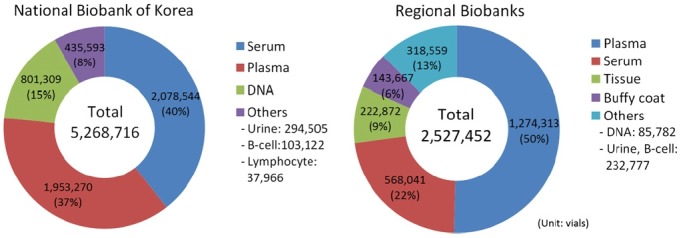

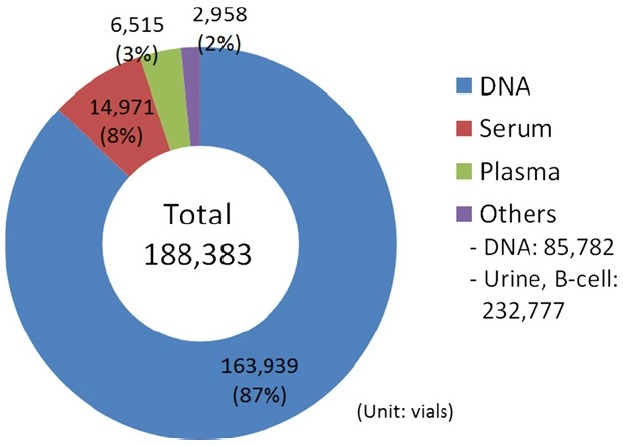
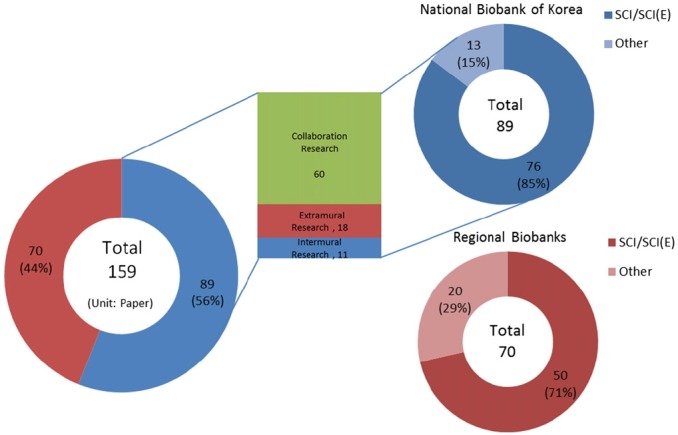
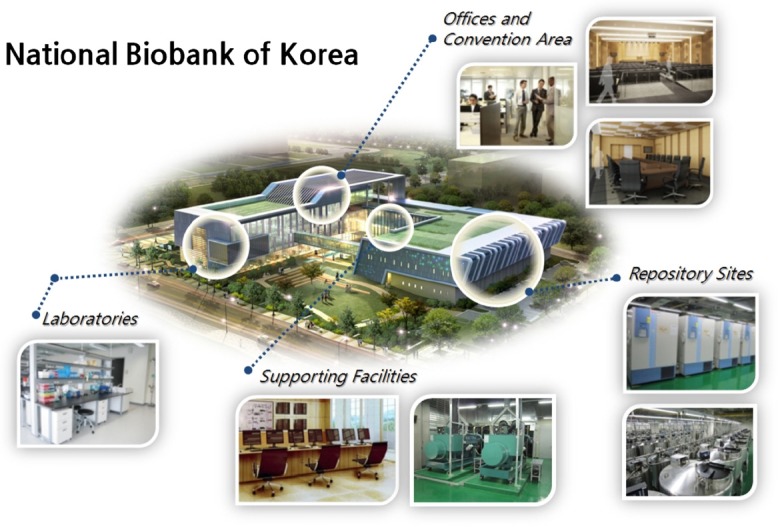
 PubReader
PubReader Cite
Cite
